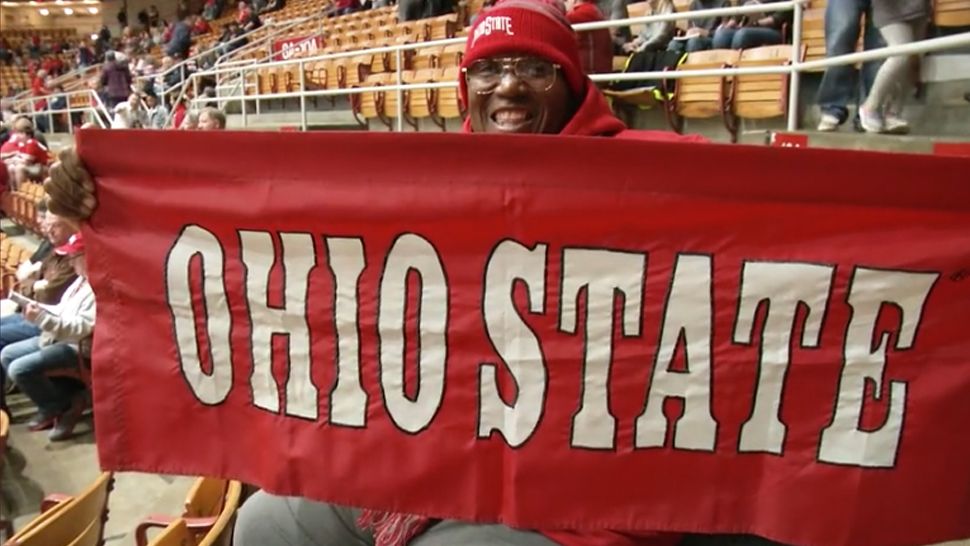Part 2 of a 3-part series
COLUMBUS, Ohio — The coaching matchup of Woody Hayes versus Bo Schembechler built a sports rivalry like no other.
- Michigan’s Governor Stevens T. Mason and Ohio’s Governor Robert Lucas led their state and territory to the brink of war
- Michigan and Ohio fought over the Toledo territory in the Battle of Phillips Corners
- On January 26, 1837, Michigan became the 26th state and Toledo remained part of Ohio
But long before these two legends squared off, two other men led their teams — well, a state and a territory — to the brink of a war.
Michigan was led by Stevens T. Mason, nicknamed “The Boy Governor.”
For Ohio, it was Governor Robert Lucas.
Both sides were told by the federal government not to do anything until a proper survey could be completed.
Michigan refused that plan and ran a different play.
“They countered by passing something called the Pains and Penalties Act in 1835, which authorized Michigan judicial officials and sheriffs to arrest anyone from any other political entity that was attempting to establish or to administer jurisdiction in the disputed territory,” said Michael Herschok, Ph.D., history department chair, University of Michigan Dearborn.
This act led to Ohio calling an audible.
Governor Lucas, of Ohio, created a new county — Lucas county.
But just declaring a new county doesn't legitimize it. Action was needed.
“That summer they snuck into what was going to become Toledo, and held a court session at a tavern. There was no court business particularly, other than to elect the officers of the court and declare there was no business to be conducted,” said Dr. Bruce Way, senior lecturer, University of Toledo Department of History.
“They’re chased away because they hear that the Michigan militia is on its way and they don’t want to fall victim to any violence, and so they quickly leave,” said Herschok.
“The Battle of Phillips Corners. That’s near… it’s in Lyons, Ohio, near Delta. An Ohio survey team, again in violation of the Michigan Pains and Penalties Act, was accosted by Michigan militia,” said Way.
Incidents like this prompted several offers to Ohio Adjunct General Samuel Andrews and Governor Lucas of military and volunteer assistance in protecting Ohio’s northern border.
At the time, Ohio officials didn’t believe the conflict would escalate any further.
“This is a great small event, to go read the two accounts of whether it was a small unarmed group approached by a large angry mob of armed people threatening life and limb or a law-abiding Sheriff’s posse chasing off a bunch of interlopers. There was some gunfire over their heads, apparently,” said Way.
“It’s unclear whether there was actually any gunfire exchanged directly between the militias of Ohio and Michigan,” said Herschok.
There were no fatalities in the war, but there was a casualty. Benjamin Stickney, one of Toledo’s early pioneers, had two sons. They were named “One" and “Two.”
“A Michigan sheriff came to arrest Two Stickney in Toledo. There was an altercation and Two Stickney did, in fact, stab the sheriff, a fellow by the name of Wood, either in the thigh or the side,” said Way. “From Michigan’s account, it was, you know, a grievous wound and lying near death. And from the Ohio account, it was a little knife used to sharpen your quill pen.”
By this point, President Jackson was anxious to get the dispute settled. He believed that if Michigan were a state, it would vote Democrat.
At the same time, he still did not want to alienate Ohio voters.
So, Jackson makes an offer. Michigan can become a state, immediately making them an equal to every state in the union, if they will give up the disputed land.
And to sweeten the deal…
“They would be given a consolation prize —the western portion of what is today Michigan’s Upper Peninsula,” said Herschok.
Despite that territory being separated from the rest of Michigan by Lakes Michigan and Huron, and that this land was considered a barren wilderness, Michigan agrees, and concedes the Toledo Strip to Ohio.
Of course, there was more in it for Michigan than just the UP.
“I know for us today, this a really tough concept to wrap our heads around, but we were running a federal surplus. And the federal surplus was going to be distributed amongst the states,” said Way.
Full immediate statehood meant Michigan would receive their cut of the surplus too.
Michigan’s acceptance of the compromise ended the first meeting of these rival states.
On January 26th, 1837 Michigan became the 26th state and Toledo remained part of Ohio.







